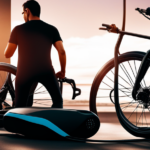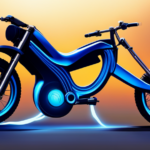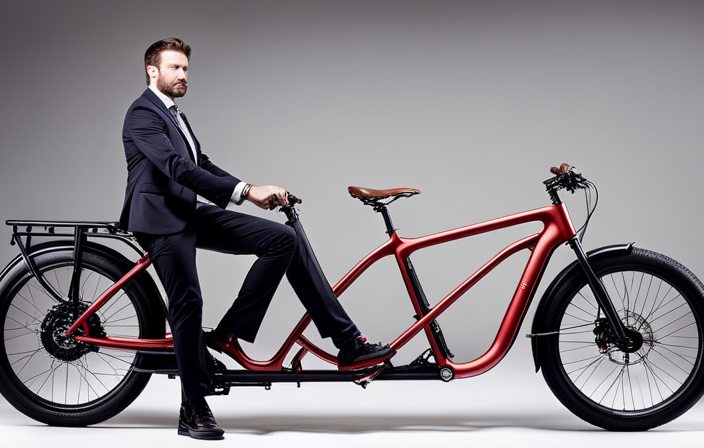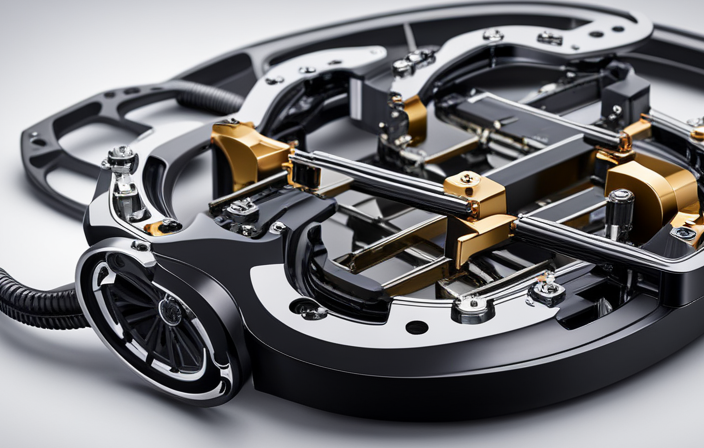Are you tired of waiting for hours to charge your electric bike? Get ready to be amazed because in this article, I will uncover the surprising truth about the actual time it takes to charge an electric bike.
We’ll explore the various factors that affect charging time, delve into the charging times for different electric bike models, and even share some handy tips to help you reduce your charging time.
So buckle up and prepare to have your mind blown!
Key Takeaways
- Battery capacity is a key factor in determining charging time for electric bikes.
- Charging infrastructure plays a significant role in the charging time of electric bikes.
- Different electric bike models have varying charging times based on factors such as battery capacity, charging voltage, and charging infrastructure.
- To reduce charging time, it is recommended to use a charger designed for your specific e-bike model, avoid using extension cords, maintain the e-bike battery in the appropriate temperature range, and explore efficient charging techniques and portable solutions.
Factors That Affect Charging Time
So, you’re probably wondering, how long does it actually take to charge your electric bike?
Well, the charging time of an electric bike can vary depending on several factors.
One key factor is the battery capacity. Electric bikes with larger battery capacities tend to take longer to charge compared to those with smaller capacities. This is because a larger battery requires more energy to fully recharge.
Another factor that affects charging time is the charging infrastructure. The quality and efficiency of the charging station or outlet can impact the overall charging time. A high-quality charging infrastructure can provide a faster and more efficient charge, reducing the time it takes to fully charge your electric bike.
Now, let’s move on to the next section where we will discuss the charging time for different electric bike models.
Charging Time for Different Electric Bike Models
One can’t help but be amazed at the varying speeds at which different models of e-bikes juice up. The charging time for electric bikes depends on several factors, including the battery capacity, charging voltage, and the charging infrastructure available.
Some electric bike models have fast charging options, allowing them to charge in as little as 1 hour, while others may take 4-6 hours or even longer. It’s important to note that having access to a reliable charging infrastructure can significantly reduce the charging time for electric bikes. With the growing popularity of electric bikes, more charging stations are being installed in cities, making it easier and faster to charge your e-bike on the go.
Transitioning into the subsequent section about ‘tips to reduce charging time,’ it is essential to consider these factors to optimize your charging experience.
Tips to Reduce Charging Time
By following these tips, you can speed up your e-bike’s charging process, allowing you to hit the road again in no time.
To achieve efficient charging, it’s recommended to use a charger specifically designed for your electric bike model. This ensures optimal charging performance and reduces the overall charging time.
Additionally, consider using portable charging solutions, such as a portable power bank or solar charger. These convenient options allow you to charge your e-bike on the go, even when access to electrical outlets is limited.
It’s also important to plug your charger directly into a wall outlet instead of using extension cords, as they can cause power loss and slower charging speeds.
Lastly, keep your e-bike’s battery at an appropriate temperature range, as extreme hot or cold temperatures can affect the charging efficiency.
With these efficient charging techniques and portable solutions, you can significantly reduce your e-bike’s charging time.
Frequently Asked Questions
Are there any safety precautions I should take when charging my electric bike?
When charging an electric bike, it is important to follow safety precautions. Some key precautions include using the correct charger, avoiding overcharging, ensuring proper ventilation, and avoiding water exposure. Proper care will maximize safety and longevity of your bike’s battery.
Can I use a regular power outlet to charge my electric bike?
Yes, you can use a regular power outlet to charge your electric bike. However, it is recommended to use a dedicated electric bike charger for faster and more efficient charging. When choosing a charger, consider the voltage, amperage, and compatibility with your electric bike model.
Is it possible to overcharge an electric bike battery?
Yes, it is possible to overcharge an electric bike battery. Overcharging risks include reduced battery life, decreased performance, and potential damage to the battery cells. It is important to follow the manufacturer’s guidelines and avoid leaving the battery connected to the charger for extended periods.
Can I charge my electric bike battery while it is still attached to the bike?
Yes, it is possible to charge the electric bike battery while it is attached to the bike. However, charging it separately has benefits such as faster charging, better battery life, and the ability to charge multiple batteries simultaneously.
How often should I charge my electric bike battery to maintain its lifespan?
To maintain the lifespan of my electric bike battery, I should charge it regularly. The recommended charging frequency is typically once every 2-3 weeks, even if the battery is not completely depleted. This helps prevent capacity loss and ensures optimal performance.
Conclusion
In conclusion, the charging time of an electric bike depends on various factors. These factors include battery capacity, charger output, and the level of depletion. Different models have different charging times, which can range from two to six hours.
To reduce charging time, there are a few strategies you can employ. First, consider using fast chargers. These chargers are designed to provide a higher output, allowing for a quicker charge. Additionally, optimizing battery usage can help reduce charging time. This can include avoiding excessive use of power-hungry features and ensuring that the battery is not completely depleted before charging.
Lastly, keeping the battery at an appropriate temperature can also help speed up the charging process. Extreme temperatures, whether too hot or too cold, can negatively impact the battery’s performance and charging efficiency.
In summary, by considering these factors and implementing these strategies, you can ensure that your electric bike charges in a timely manner. Just as a well-oiled machine runs smoothly, a well-charged electric bike allows for a seamless and efficient ride. This ensures that you’re always ready to hit the road without any delays.
















